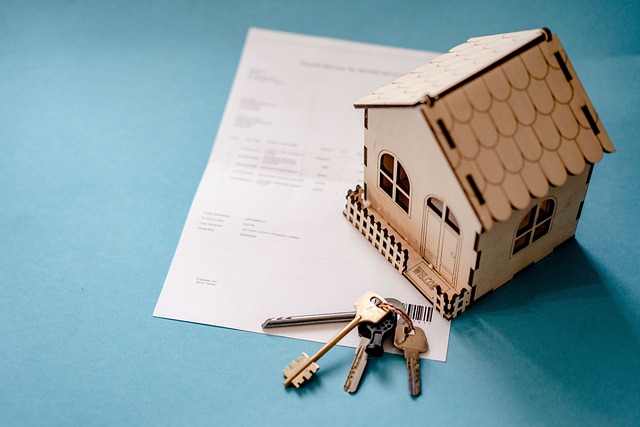Address Occupant Lookup (AOL) systems are sophisticated tools that accurately verify residency by cross-referencing diverse data sources, including public records and databases, to match input addresses with comprehensive residential datasets. These systems employ advanced algorithms, machine learning, and natural language processing to interpret various forms of data, ensuring precise occupant identification through the analysis of names, birthdates, and historical address history, while accounting for address format variations and aliases over time. AOL services are governed by stringent legal frameworks like the FCRA and GDPR, emphasizing the importance of privacy and compliance with local regulations such as the CCPA. Enhancements in accuracy are achieved through data enrichment, real-time data integration, and geospatial analysis, which together make AOL systems essential for targeted marketing, thorough background checks, and precise governmental functions, while also ensuring that businesses navigate the delicate balance between data utility and individual privacy rights.
Navigating the intricacies of Address Occupant Lookup systems is a multifaceted endeavor that intertwines data retrieval, legal frameworks, and advanced techniques. This article delves into the mechanics behind these systems, highlighting their reliance on public records for accurate data. It also addresses the critical legal and privacy considerations when accessing occupant information. Furthermore, it explores sophisticated methods to refine search precision. Understanding each aspect is key to mastering the complexities of Address Occupant Lookup.
- Deciphering the Mechanics of Address Occupant Lookup Systems
- The Role of Public Records in Address Occupant Data Retrieval
- Legal and Privacy Considerations in Accessing Occupant Information
- Advanced Techniques for Enhancing Address Occupant Lookup Accuracy
Deciphering the Mechanics of Address Occupant Lookup Systems

Address Occupant Lookup systems are sophisticated tools that facilitate the identification of individuals residing at specific addresses. These systems integrate various data sources, including public records and real-time databases, to provide accurate information on occupants. The mechanics behind these systems involve a multi-step process where an input address is matched against a comprehensive database containing residential information. This process requires advanced algorithms capable of cross-referencing multiple data points such as names, dates of birth, and historical address data to confirm the presence of a particular individual at the given location.
Upon receiving an inquiry, Address Occupant Lookup systems activate search protocols that scan through vast amounts of data with high precision. The sophistication of these systems lies in their ability to navigate through complex data structures and return results that are both timely and relevant. They account for variations in address formats, common aliases, and even address changes over time. By leveraging cutting-edge technology like machine learning and natural language processing, these systems can also interpret and understand various forms of data input, enhancing their accuracy and efficiency in locating occupants associated with a given address.
The Role of Public Records in Address Occupant Data Retrieval

In the realm of data retrieval, public records serve as a critical foundation for conducting an effective Address Occupant Lookup. These records, which are often maintained by local government agencies and other authoritative bodies, contain a wealth of information that can be legally accessed to determine who resides at a given address. The interconnected nature of these records includes property deeds, voter registration data, vehicle ownership details, and various other types of records that collectively provide a comprehensive view of occupancy. By leveraging such a robust dataset, individuals or organizations performing an Address Occupant Lookup can enhance the accuracy and reliability of their findings. The process involves querying multiple databases to cross-reference information, which helps in verifying the identity and current residence of an individual. This multi-faceted approach ensures that the data obtained is not only up-to-date but also compliant with privacy laws and regulations, thereby safeguarding the sensitive nature of occupant information. In essence, the utilization of public records in Address Occupant Lookup processes underpins the ability to accurately identify individuals associated with specific addresses, which has a myriad of applications across various sectors, including marketing, background checks, and governmental operations.
Legal and Privacy Considerations in Accessing Occupant Information

Address Occupant Lookup services are subject to stringent legal and privacy frameworks that govern the access and use of personal information. These services must navigate a complex web of regulations, including the Fair Credit Reporting Act (FCRA) in the United States, which sets guidelines for how consumer credit information can be reported, used, and disseminated. The FCRA also provides safeguards against misuse of personal data. Additionally, the General Data Protection Regulation (GDPR) in the European Union imposes comprehensive obligations on entities handling personal data, including obtaining explicit consent from individuals before processing their data.
In the context of Address Occupant Lookup, privacy considerations are paramount. These services often rely on public records and databases that contain sensitive information. It is crucial for providers to ensure compliance with data protection laws such as the California Consumer Privacy Act (CCPA) and other local data privacy regulations. Providers must handle all occupant data with care, implementing robust security measures to protect against unauthorized access and data breaches. They must also maintain transparency in their data collection practices and provide users with clear information about how their data is used, whom it is shared with, and under what circumstances it may be disclosed. Balancing the legitimate needs of businesses and organizations for occupant information with individuals’ privacy rights requires a careful and ongoing approach to compliance and ethical conduct.
Advanced Techniques for Enhancing Address Occupant Lookup Accuracy

The process of an Address Occupant Lookup (AOL) is a nuanced task that requires sophisticated algorithms and up-to-date databases to ensure high accuracy rates. To refine the precision of AOL, data enrichment techniques are employed, which involve augmenting basic occupant information with additional contextual data points. This enhanced dataset allows for more accurate predictions about who resides at a given address. Machine learning models play a pivotal role in this enhancement by analyzing patterns from historical data, thereby improving the model’s predictive capabilities over time.
Another advanced technique to bolster AOL accuracy is the integration of real-time data sources. By incorporating information from public records, social media platforms, and other reliable databases, the system can cross-reference and verify occupant details with current events and trends. This integration not only updates the existing occupancy data but also flags any discrepancies or changes in occupancy status, ensuring that the information provided is as accurate and up-to-date as possible. Geospatial analysis further refines the process by mapping occupancy data to physical locations, accounting for address variations due to common misspellings, abbreviations, or address changes, thereby enhancing the overall accuracy of Address Occupant Lookup systems.
In conclusion, the process of conducting an Address Occupant Lookup is a multifaceted endeavor that intertwines the mechanics of sophisticated systems with the utilization of public records, all while navigating the intricate legal and privacy frameworks that govern occupant information. The advanced techniques employed to enhance lookup accuracy underscore the importance of adhering to ethical standards and regulatory compliance. As technology advances, so too must the protocols surrounding Address Occupant Lookup to ensure both security and accessibility for legitimate purposes. Understanding these complexities is paramount for entities operating within this realm, ensuring that such services are performed responsibly and effectively.



